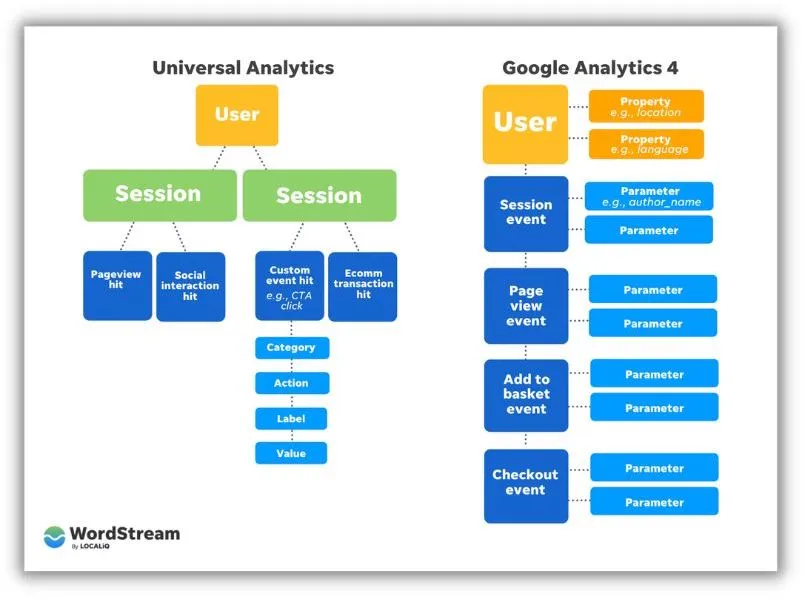Google Analytics Event Tracking for Dummies
Wiki Article
Getting The Google Analytics Event Tracking To Work
Table of Contents3 Simple Techniques For Google Analytics Event TrackingUnknown Facts About Google Analytics Event TrackingThe Ultimate Guide To Google Analytics Event TrackingGoogle Analytics Event Tracking Things To Know Before You BuyExcitement About Google Analytics Event TrackingThe Definitive Guide to Google Analytics Event Tracking

If you're mosting likely to establish event tracking by hand, then you're going to have to add some extra code to the aspects you wish to collect information from. The code you're going to function with will certainly look something like this: There are four elements within that code snippet that you're going to need to define on your own: event, Category, occasion, Activity, occasion, Tag and event, Value.
As you can see, 2 of these are called for (group and activity) while tag and value are optional. Everything depends on the kind of details you want passed on back to Google Analytics when an individual clicks the defined aspect (Google Analytics Event Tracking). It will certainly be a lot easier to define these parts if you evaluate your website and decide which elements/actions you wish to track
The Best Strategy To Use For Google Analytics Event Tracking
Currently, you'll be asked to define the and and you'll wish to choose from the drop-down menu that shows up when you click on. This will bring up the exact same event tracking elements we considered earlier, which you'll require to fill up out. When you've defined these, you can relocate down to the 2nd box and select the trigger that will fire your tag.On the next screen, you'll likewise have a field for naming your trigger and, if you click package, you'll see a listing of the different triggers you can choose. In this case, we intend to select and afterwards choose the choice listed below. You'll establish the trigger to just fire when an aspect is clicked with an URL that includes the.
Every web site talks. Before information analytics, we could not listen to the voices of our web sites. Exactly how do you know what your website is saying? Easy - Event monitoring! Occasion monitoring offers you an image of how users involve with your web site and business (Google Analytics Event Tracking). Do you would like to know more? Read on as we explore every little thing you require to understand, including what it is, why you must track events, how to take care of occasions information, and various other pertinent FAQs you may have.
Our Google Analytics Event Tracking PDFs
You can change in between your event classifications, activities, and labels in the Top Occasions report. The Occasion Pages record displays the pages where events are triggered.It shows you the course they take as they move from one event to the next and helps you to identify which material involves your target market the a lot of. Events in Google Analytics have 4 major components. They are likewise a component of the occasion tracking code. Google Analytics uses these codes to track customer basics communications and group them right into event reports.
Then, pick "Variables" > "Configure". A list of the parameters you can track on your web site is on the right. Under Clicks, Forms, and Video clips, double-check each criterion. After inspecting all required fields, you can click "X" to close the home window and return to the Introduction menu on the.
Some Ideas on Google Analytics Event Tracking You Should Know

Choosing "False" will protect against that session from being a bounce. If you have not done so, you may need to establish up a variable in the Google Analytics Settings box. Click "New Variable ..." if you can't discover one to choose. Hereafter, enter your GA monitoring ID in the Monitoring ID field.
Your ID will certainly get on top of the display. To do this, comply with the next series of activities: After setting up the fields, choose the "Triggering" section. When configuring your brand-new trigger, click the "+" switch, after that the "pencil" button, then select your trigger kind. Label your trigger and define the conditions that bring about cause shooting.
How Google Analytics Event Tracking can Save You Time, Stress, and Money.

When it familiarizes which sections Full Report and aspects are guiding consumers through your conversion channel, you still will not know. So, without event tracking, GA records will just count brows through as single-page sessions, even if users invest a lot of time on one web page and engage with it substantially (and a bounce).
However how does event monitoring attain this?Single-page sessions called bounces begin and conclude on the exact same page. Without event tracking, GA will certainly categorize a customer's see as a bounce if they do not navigate to an additional web page, regardless of just how they communicate with it. For example, a video-rich page can have a greater bounce read this article rate if events are not tracked.
The Main Principles Of Google Analytics Event Tracking
However, for GA to take event hits into account when determining bounce prices, you have to choose "Non-interaction occasion" as "False" throughout the GTM setup. Establishing "event goals" with occasion activity is an excellent way to monitor individual activities you value highly, such as new lead submissions or clicks on a contact us to action.Report this wiki page